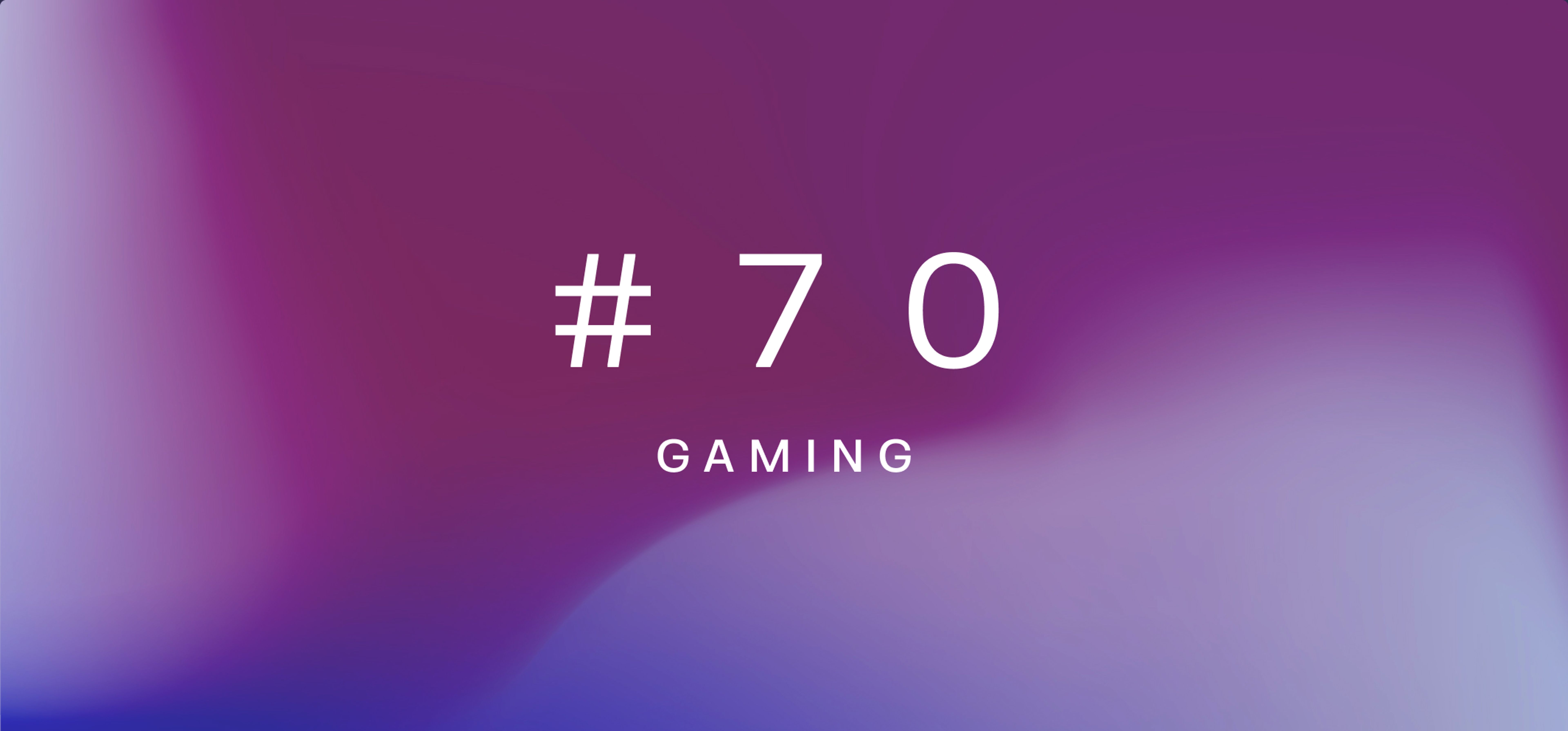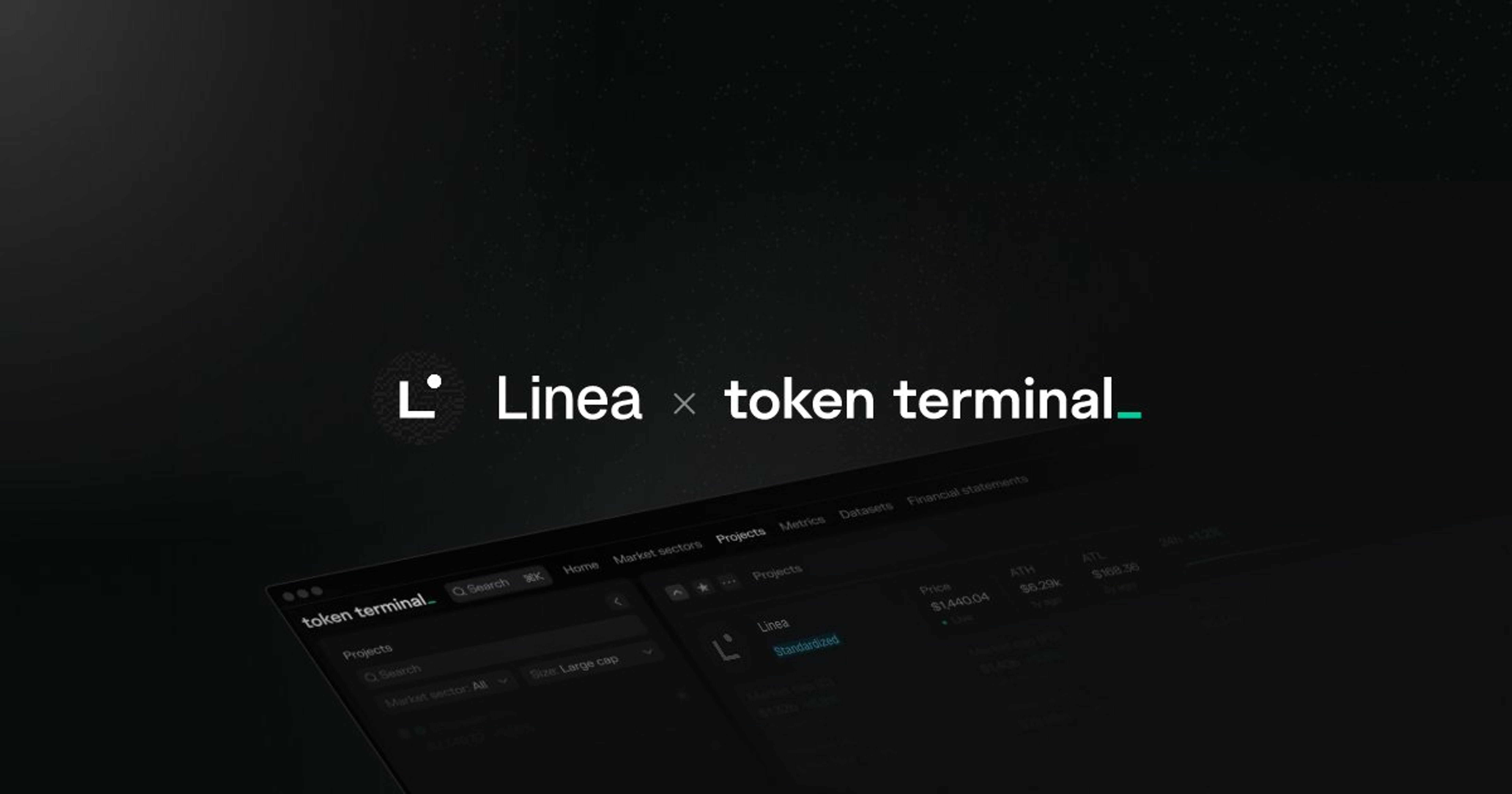Newsletter
Crypto fundamentals – Charts and trends to watch

A walkthrough of the most interesting charts and trends in crypto, with a focus on key business drivers and protocol fundamentals.
This week’s newsletter focuses on the gaming market sector, which has a designated dashboard on Token Terminal. Let’s dig in!
Onchain games are smart contract-based games that allow users to truly own their in-game items and credentials.
Introduction
- Onchain games utilize smart contracts to merge gaming with features native to the blockchain. These features include immutable in-game data, asset interoperability, and more.
- In-game characters and items are represented by tokens. As in-game assets are onchain, players are able to store, transfer or trade their items freely. Composable developer standards also allow third party builders to integrate easily with games.
- Onchain games allow players to own and retain the value they create in a game’s economy. Players are able to convert their assets to other currencies through secondary markets. They are also protected from extractive in-game marketplace fees, as third party alternatives are available. This is rarely possible in traditional games, where assets are generally held in centralized and siloed environments.
Overview
The daily fully diluted market cap over the past 90 days and fees over the past 180 days for the projects in the gaming market sector are visualized below.
Scope of analysis
- The gaming dashboard currently features 6 projects within the gaming market sector. It is important to note that the dashboard can only give an indicative analysis of the market sector.
- Aggregated fully diluted market capitalization across gaming dropped by 37% over the last 90 days. This makes it one of the worst performing sectors by price. In particular, the fully diluted market cap of Axie infinity’s AXS token dropped from $2.3b to $1.6b over this period. AXS currently represents ~60% of the total market cap of the Gaming sector.
- Onchain gaming activity was reliant on the unsustainable play-to-earn model. Play-to-earn is a genre of onchain games where players earn rewards through their gameplay. Due to the large reward emissions, play-to-earn led to an initial surge in activity. Following this model, monthly fees for Axie Infinity peaked at $366.4m in August 2021. This was more than the combined fees of Uniswap and OpenSea ($345.4m) over the same period. However, gaming activity declined following a market downturn, as rewards were no longer lucrative.
- Although some games are exploring more sustainable business models, this has yet to be reflected in their valuations. Over the past 180 days, Decentral Games made $144.4k more in fees than it paid out in gameplay token incentives. Despite this, DG’s fully diluted market mcap dropped by 7% over the same period.
- Fees across onchain gaming have remained mostly consistent over the past 180 days, with a slight downtrend in June. While top gaming protocols generated an average of $13.0k in fees per day over the past 180 days, daily fees have declined to just $7.6k across June.
- The level of gaming activity is closely aligned with broader market trends. The demand for onchain games has seen a significant decline since peak levels in 2021, in line with other market sectors. Recent activity has somewhat stablized, with the sector generating over $2.3m in fees over the past 180 days.
- Axie Infinity is the current market leader in the gaming sector based on fees. Axie Infinity holds ~75% of the total gaming market share in fees, generating $10k in fees per day over the past 30 days. It also maintains a large DAO treasury with over ~$140m in AXS and $112m in WETH.
Momentum
Some interesting trends for projects in the gaming market sector are visualized below.
- Both Axie Infinity and Decentral Games generate more fees from in-game purchases than from secondary sales. During Axie Infinity: Origins Season 4, over 65% of the fees were generated from in-game purchases. This includes breeding and minting of in-game characters and assets. Similarly for Decentral Games, close to 84% of fees within the last 90 days were from in-game purchases. Only 4% of fees came from secondary market royalties.
- Decentral Games has introduced new ways for users to make in-game purchases. One of the new additions was ICE Poker Tournament Mode introduced in August 2022. This new game mode requires an allocation of Shine tokens for entry. Since then, Shine sales have become the largest fee source for the game, generating close to $100k over the last 90 days.
- An increase in in-game purchases represents more reliable growth. Fees from in-game purchases are a direct result of player activity. On the other hand, fees from secondary sales are less reliable. Competing secondary markets are able to undercut each other by lowering fees and royalties.
- Onchain games are more popular on Polygon and BNB Chain than on Ethereum. Planet IX was the 2nd highest gas-consuming project on Polygon over the past 365 days, with over 58.5m transactions. On BNB Chain, Hooked Pickaxe and Mobox were the 5th and 8th highest gas-consuming projects with a total of ~45m transactions. In contrast, the highest gas-consuming game on Ethereum was The Sandbox, which only saw 0.6m transactions over the past year.
- Onchain games are generally very transaction-intensive. They are better suited to high throughout, low gas environments. Some games require players to submit regular transactions to interact with gameplay elements. This places significant pressure on the scalability of a blockchain if the game becomes widely-played. The associated gas fees may also become prohibitive for players and other general users of the blockchain.
- We anticipate more onchain games to launch on their own chains. Gaming-focused chains, such as Ronin Network for Axie Infinity, allow the game to customize its network according to specific needs, such as increasing throughput, lower gas fees, and more. Other prominent examples include DeFi Kingdoms and Crabada, both of which have launched their standalone Avalanche Subnets in 2022.
- We also expect further developments into account abstraction to improve onchain gaming UX. Account abstraction allows features such as session keys, which are able to sign transactions on behalf of a user without explicit wallet confirmations. This removes the need for players to approve a separate transaction for each in-game action, which improves gameplay immersion.
Other key highlights from the gaming market sector
- Axie Infinity has released a lite version of Axie Infinity: Origins on the Apple iOS App Store on May 17th, 2023. The iOS game will initially only be available in select countries throughout Latin America and South East Asia.
- Decentral Games recently received a Malta gaming license. They plan on launching the first Malta-compliant Metaverse casino with BlackJack, Roulette, and Poker for players in qualifying jurisdictions.
- Illuvium launched Private Beta 2 on May 18th, 2023. This update introduces new maps, in-game characters, gameplay elements, and more. Please note that this data is not yet available on Token Terminal.
- Treasure recently partnered with Knights of the Ether to launch Blightfell, a free-to-play deckbuilder game. Players will be able to mint exclusive in-game NFTs using Treasure’s MAGIC token. Treasure’s integration on Token Terminal is currently under progress.
Changelog
| Action | Business impact |
|---|---|
| Net Treasury added for Axie Infinity. | Allows Token Terminal to provide treasury data that excludes the native AXS tokens. |
| Governance token incentives updated for Decentral Games. | Allows Token Terminal to provide more accurate and up-to-date data for Decentral Games. |
| Seaport updates added for Decentral Games royalty calculations. | Allows Token Terminal to provide more accurate and up-to-date data for Decentral Games. |
Video of the week
In this episode of the Fundamentals podcast, we're joined by Darren Camas and Dimitar Dinev, the Co-Founders of IPOR Protocol. IPOR is a non-custodial exchange for interest rate swaps built on Ethereum.
Listen to the episode:
As a DeFi protocol, IPOR refers to a series of smart contracts that provide a benchmark interest rate and enable users to access Interest Rates Derivatives on the Ethereum blockchain. IPOR is an abbreviation for Inter Protocol Over-block Rate. It derives its name from major indices from traditional finance like the LIBOR - the London Interbank Offered Rate, and the SOFR - Secured Overnight Financing Rate and adapts it to DeFi.
In this episode we discuss what IPOR is, how it works, its core value proposition, and its position within the market. Also, we dive into IPOR’s financials, the upcoming v2 of the protocol, the team behind the project, exciting upcoming developments, and more!
Timestamps:
00:00 Introduction
01:51 What is the IPOR Protocol?
04:01 The core problem that IPOR solves
07:32 IPOR's product suite
09:17 Overview of the protocol's architecture
13:14 Why build on Ethereum? How is IPOR thinking about going multichain?
15:29 IPOR V2
22:55 State of the market & IPORs unique selling proposition
26:26 Founding story & the team building IPOR
32:00 Economic and business models
36:05 The IPOR token
38:17 The venture case for IPOR
39:27 Growth drivers & challenges
42:59 IPOR Power Tokens: innovating liquidity mining
45:25 ETH staking rate derivative
Product tip of the week
Tips for getting the most out of Token Terminal.
Market sector pages provide aggregated, easy-to-digest overviews of all the market sectors on Token Terminal.
The authors of this content, or members, affiliates, or stakeholders of Token Terminal may be participating or are invested in protocols or tokens mentioned herein. The foregoing statement acts as a disclosure of potential conflicts of interest and is not a recommendation to purchase or invest in any token or participate in any protocol. Token Terminal does not recommend any particular course of action in relation to any token or protocol. The content herein is meant purely for educational and informational purposes only, and should not be relied upon as financial, investment, legal, tax or any other professional or other advice. None of the content and information herein is presented to induce or to attempt to induce any reader or other person to buy, sell or hold any token or participate in any protocol or enter into, or offer to enter into, any agreement for or with a view to buying or selling any token or participating in any protocol. Statements made herein (including statements of opinion, if any) are wholly generic and not tailored to take into account the personal needs and unique circumstances of any reader or any other person. Readers are strongly urged to exercise caution and have regard to their own personal needs and circumstances before making any decision to buy or sell any token or participate in any protocol. Observations and views expressed herein may be changed by Token Terminal at any time without notice. Token Terminal accepts no liability whatsoever for any losses or liabilities arising from the use of or reliance on any of this content.
Stay in the loop
Join our mailing list to get the latest insights!
Continue reading

Customer stories: Token Terminal’s Data Partnership with Linea
Through its partnership with Token Terminal, Linea turns transparency into a competitive advantage and continues to build trust with its growing community.

Introducing Tokenized Assets
Token Terminal is expanding its standardized onchain analytics to cover the rapidly growing category of tokenized real-world assets (RWAs) – starting with stablecoins, tokenized funds, and tokenized stocks.

Customer stories: Token Terminal’s Data Partnership with EigenCloud
Through its partnership with Token Terminal, EigenCloud turns transparency into a competitive advantage and continues to build trust with its growing community.